Condensation is a common problem that campers encounter in their tents. It occurs when warm, moist air inside the tent comes into contact with the colder surface of the tent walls or roof, causing the water vapor to condense into droplets. This can lead to a damp and uncomfortable sleeping environment, as well as potential damage to your gear.
In this guide, we will discuss some tips and tricks for keeping condensation out of your tent, so you can have a dry and comfortable camping experience.
Understanding Condensation in Tents
To effectively combat condensation in your tent, it’s important to understand its causes. Aside from the obvious source of moisture (your breath and body heat), there are other factors that can contribute to condensation.
Another factor is the outside weather conditions. Camping in colder or wetter climates can increase the chances of condensation occurring, as the temperature difference between the inside and outside of your tent will be greater. Furthermore, the presence of nearby water sources, such as lakes or rivers, can also contribute to higher humidity levels inside the tent.
Taking proactive measures to mitigate condensation is crucial. This can include using a rainfly or footprint to create an additional barrier between your tent and the ground, which helps prevent moisture from seeping through. Properly venting the tent by opening windows or vents can also facilitate airflow and reduce condensation buildup.[2]
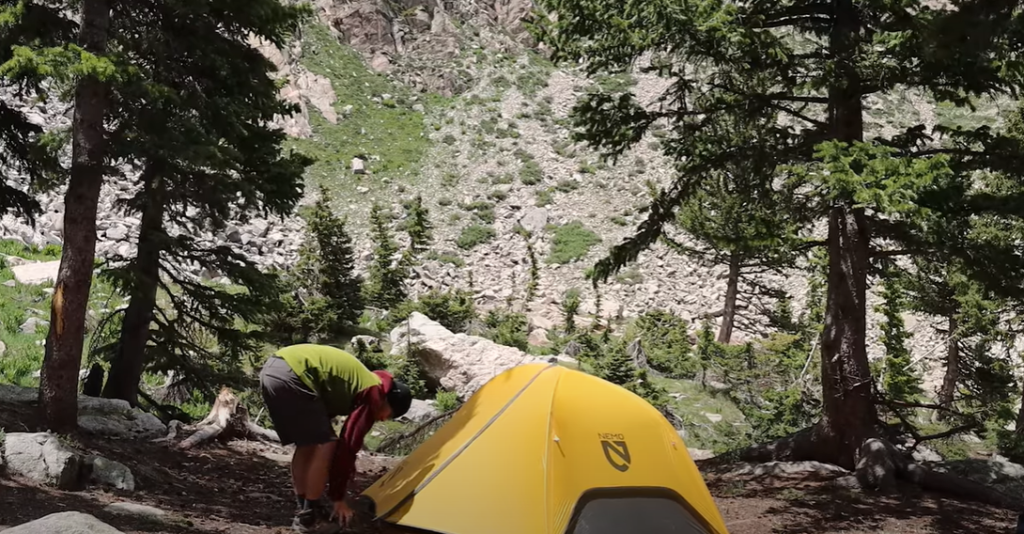
Importance of Managing Condensation
While condensation may seem like a minor annoyance, it’s important to manage it properly for several reasons. First and foremost, excessive condensation can lead to a damp sleeping environment, making it uncomfortable and difficult to get a good night’s sleep. It can also cause damage to your gear, particularly if left unchecked over multiple camping trips.
Moreover, prolonged exposure to high levels of moisture can create the perfect breeding ground for mold and mildew, which can lead to health issues if not properly addressed. It’s important to regularly air out and dry your tent after each use to prevent these potential problems.
Additionally, the presence of excessive condensation can also compromise the overall durability and longevity of your camping equipment. The accumulation of moisture can weaken the fabric and materials, affecting their performance and lifespan. By effectively managing condensation, you can ensure that your gear remains in top condition, allowing for more enjoyable and worry-free camping experiences.
Furthermore, mitigating condensation can contribute to improved thermal regulation inside your tent. Excessive moisture buildup can interfere with the insulation properties, making it harder to maintain a comfortable temperature. By implementing proper ventilation and moisture control measures, you can optimize the thermal efficiency of your camping setup, ensuring a cozy and pleasant environment regardless of the outside weather conditions.[2]
Selecting the Right Tent
Ventilation Considerations
When shopping for a tent, it’s crucial to prioritize ventilation for a comfortable camping experience. Look for tents that offer excellent airflow control with multiple windows and easily adjustable vents. These features allow you to regulate airflow according to your needs and preference. Additionally, consider tents with mesh panels on the walls for improved air circulation throughout the interior.
By paying attention to these details and selecting a tent that offers optimal ventilation and thoughtful design, you can create a comfortable and refreshing camping environment even in the warmest weather conditions.[1]
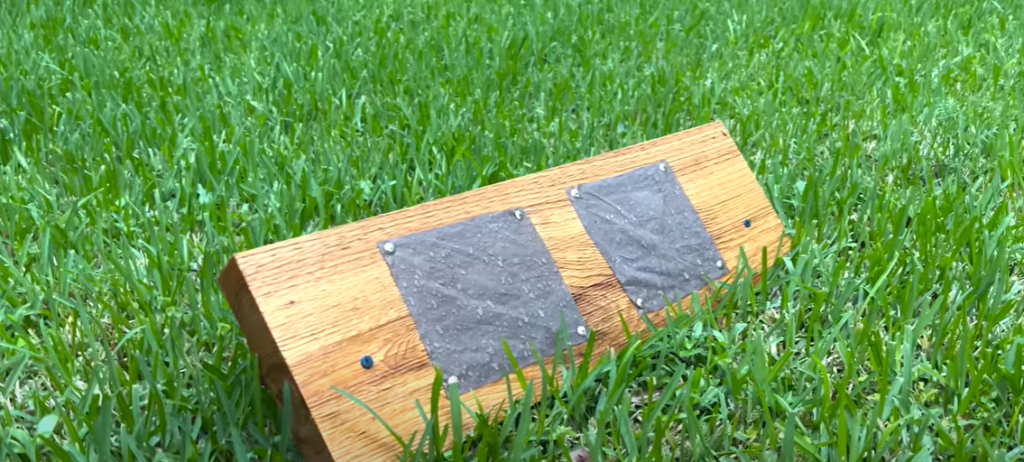
Tent Material and Design
In addition to ventilation, the type and quality of materials used in a tent can also impact condensation. As mentioned earlier, non-breathable fabrics can trap moisture inside your tent, leading to excessive condensation. Look for tents made from breathable materials such as nylon or polyester with a waterproof coating. These fabrics allow moisture to escape while still providing protection from the elements. Additionally, tents with built-in air vents and rainflys can also help reduce condensation by allowing for proper airflow.
Another crucial factor to consider is the tent’s design and construction. Tents with a single-wall construction, where the rainfly and tent walls are one piece, can be prone to condensation buildup due to insufficient ventilation. Opting for a double-wall design with separate tent and rainfly components can help combat this issue by providing better airflow and reducing moisture buildup.[1]
Tent Size and Occupancy
Another consideration when choosing a tent is its size and occupancy. A tent that is too small for the number of people occupying it can contribute to higher humidity levels, leading to increased condensation. It’s important to select a tent with enough space for everyone and their gear to ensure proper ventilation and minimize moisture buildup.
Additionally, consider the layout of the tent. Choosing a tent with separate sleeping and living spaces can improve air circulation and reduce the likelihood of condensation occurring in common areas.[1]
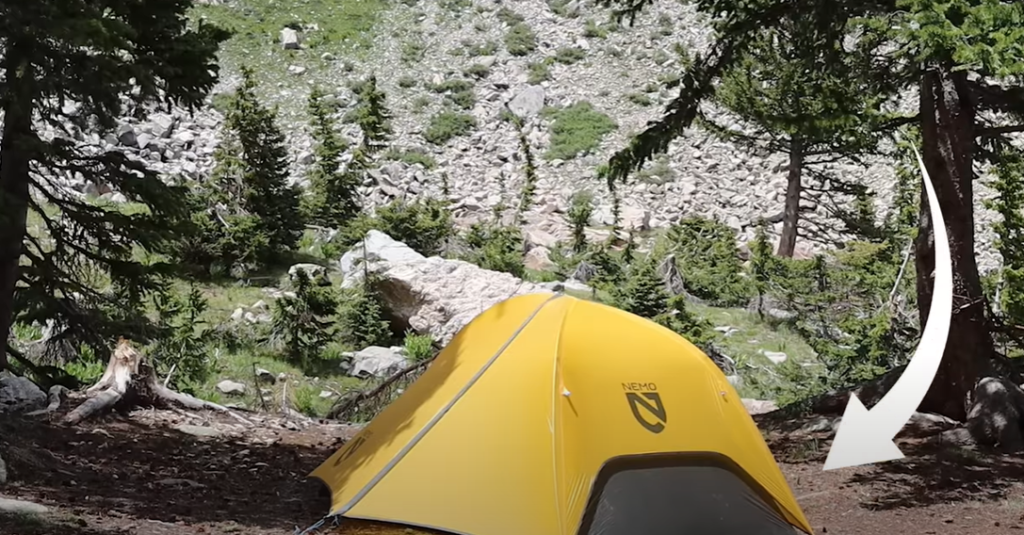
Campsite Selection and Preparation
In addition to using the right tent, proper campsite selection and preparation can also greatly contribute to minimizing condensation. When setting up your tent, it is important to consider the surrounding environment. Avoid low-lying areas or locations near bodies of water, as these tend to have higher humidity levels and can increase the chances of condensation. Instead, opt for a spot that offers good airflow and natural drainage to facilitate moisture evaporation.
To further prevent moisture-related issues, take the time to clear away any debris or vegetation from the ground where you plan to pitch your tent. This simple step can help create a more even surface and reduce the likelihood of moisture seeping into your tent through the floor. Additionally, consider investing in a quality tent footprint or groundsheet. This additional layer acts as a barrier between your tent and the ground, further minimizing the transfer of moisture and providing added protection to the bottom of your tent.
By paying attention to these details and implementing these strategies, you can enhance your camping experience and ensure a more comfortable and dry environment inside your tent.[4]
Ventilation Strategies
Using Tent Windows and Doors
One of the most effective ways to improve ventilation and reduce condensation is by utilizing your tent’s windows and doors. Opening these features during dry weather can help promote air circulation, allowing moisture to escape and preventing it from accumulating inside your tent.
During wet or rainy conditions, you may need to partially close these openings while still leaving some space for airflow. This method helps prevent rain from entering your tent while still allowing for proper ventilation. Additionally, you can consider using rain fly extensions or vestibules to provide extra protection from the elements and create a buffer zone between the exterior and interior of your tent. This can further enhance ventilation by allowing air to flow freely while keeping rainwater away from the main openings.
Moreover, positioning your tent in a strategic location can also play a role in optimizing ventilation. Choosing a spot with natural wind flow or setting up your tent in an area where there is a slight elevation can help maximize air circulation. By taking these additional steps, you can ensure a comfortable and well-ventilated camping experience, regardless of the weather conditions.[3]
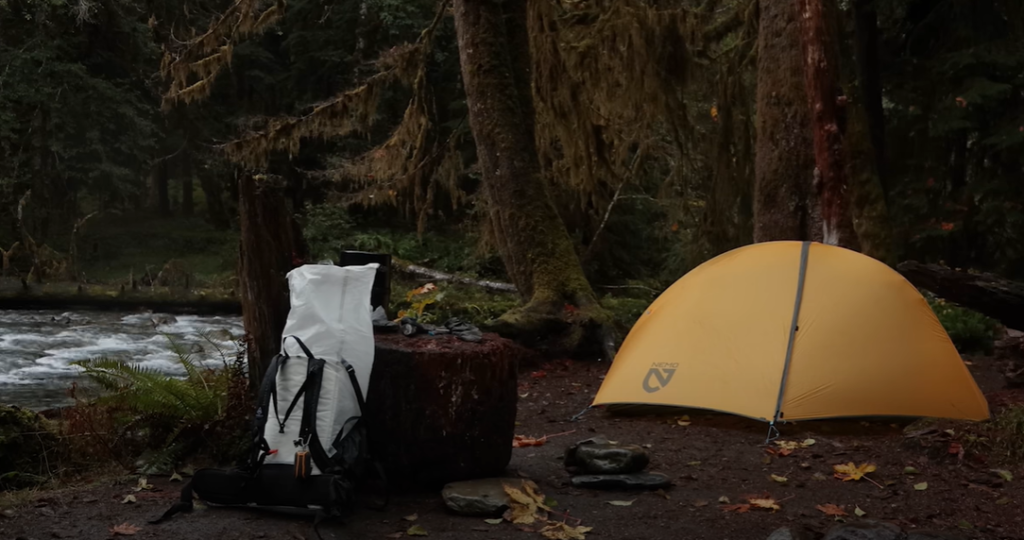
Rainfly and Vestibule Management
As mentioned earlier, the rainfly plays a vital role in minimizing condensation. However, how you manage your rainfly and vestibule can also impact ventilation levels. During dry weather, you can roll back or remove the rainfly to allow for maximum airflow through the mesh roof and walls. This method is especially effective during hot summer months when cool air is essential for staying comfortable in your tent.
During wet weather, it’s best to keep the rainfly in place and adjust the ventilation openings accordingly. Additionally, keeping a vestibule open can also help promote air circulation and prevent moisture buildup inside your tent. Just be sure to secure any gear or personal belongings inside the vestibule to protect them from getting wet.[3]
Adjustable Ventilation Aids
In some cases, you may need additional help to manage condensation in your tent. This is where adjustable ventilation aids such as vents or air vents can be useful. These features are designed to allow you to control the amount of airflow and prevent moisture buildup inside your tent.
You can look for tents with built-in adjustable ventilation systems or consider purchasing separate ventilation aids that can be attached to your tent. Just be sure to follow the manufacturer’s instructions and guidelines when installing or using these features to ensure proper functionality and safety.[3]
Managing Internal Moisture
Finally, paying close attention to your own actions and behaviors inside the tent can significantly help prevent condensation buildup. Activities such as cooking meals or using wet gear can contribute to increased internal moisture levels, which may lead to discomfort or even damage to your belongings. Even something as simple as breathing can add to the humidity inside the tent.
To minimize these effects, consider installing a small portable fan in your tent. This device can greatly improve air circulation, promoting a fresher and drier environment. Additionally, it is advisable to avoid bringing wet or damp items into your tent. Instead, store them in a designated area outside or under a rainfly to keep the interior dry.
If you must cook inside the tent, take extra precautions. Consider using a camping stove with proper ventilation to minimize the release of moisture and cooking odors. It is also essential to ensure that your tent is adequately ventilated before starting any cooking activities.[4]
By implementing these measures, you can create a more comfortable and condensation-free camping experience, allowing you to fully enjoy your time in the great outdoors.
Condensation-Resistant Gear
If you frequently camp in humid or wet environments, investing in condensation-resistant gear can be a game-changer. Many tent manufacturers now offer models with advanced materials and features specifically designed to minimize condensation buildup.
By choosing a condensation-resistant tent, you can eliminate the need for constant ventilation management, allowing you to focus more on enjoying your camping experience. With improved moisture control and a more comfortable living environment, you can fully immerse yourself in the beauty of nature without any worries.[4]
Expert Tips for Condensation Prevention
To wrap up, we have compiled some additional tips and tricks from outdoor experts to help you keep condensation out of your tent:
- When setting up your tent, be sure to lay down a footprint or tarp underneath. This simple step provides an additional layer of protection against moisture, ensuring a dry and comfortable sleeping environment.
- It’s important to avoid touching the walls of your tent with wet gear or body parts. This contact can transfer moisture inside, potentially causing discomfort or even dampness. By being mindful of this, you can maintain a dry and cozy space.
- When selecting a campsite, consider the importance of good drainage. Opting for a location with proper water runoff can prevent any pooling around your tent, minimizing the risk of water seeping in during rainy conditions.
- Before settling in for the night, take a moment to open all windows and vents in your tent. This simple action promotes maximum airflow, allowing fresh air to circulate throughout the night. You’ll wake up feeling refreshed and ready for the day ahead.
- In the morning, take a quick inventory of any condensation that may have accumulated inside your tent. A handy towel or cloth can easily wipe away any moisture, ensuring a dry and pleasant start to your day in the great outdoors.[4]
By following these expert tips and incorporating the aforementioned methods, you can effectively manage condensation in your tent and enjoy a dry and comfortable camping experience.
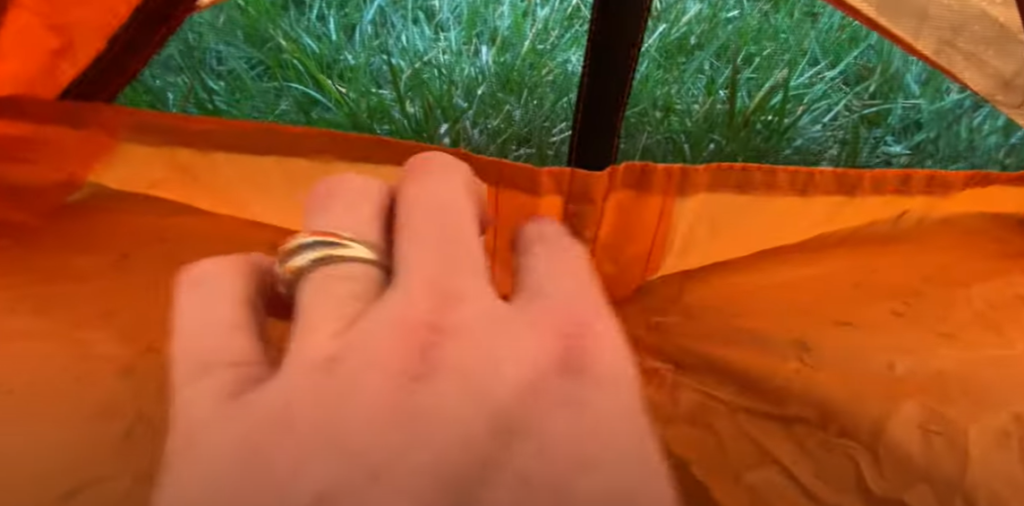
FAQ
Why is my tent wet inside after rain?
Condensation is the most likely culprit for a wet tent interior after rain. As warm air inside the tent comes into contact with cooler surfaces, such as the walls or rainfly, it turns into liquid droplets due to a process called dew point. This natural phenomenon occurs when the temperature of the air reaches its saturation point, causing water vapor to condense into visible moisture. Without proper ventilation and management, this condensation can accumulate and make your tent feel damp, creating an uncomfortable camping experience. It’s important to be aware of this moisture buildup and take necessary steps to mitigate it, such as using ventilation systems or strategic placement of camping gear to minimize contact with tent surfaces prone to condensation. By understanding and addressing the factors that contribute to condensation, you can enhance your camping experience and ensure a dry and comfortable tent interior even in wet conditions.
How does condensation occur in tents and how can it be prevented?
Condensation occurs in tents when warm air inside the tent comes into contact with cooler surfaces, such as the walls or rainfly. To prevent this, make sure to properly ventilate your tent and avoid bringing wet items inside. You can also invest in a condensation-resistant tent or use adjustable ventilation aids to help manage moisture levels. Additionally, following expert tips such as using a footprint or opening all windows and vents can also help prevent condensation buildup.
How do you deal with condensation in a single wall tent?
In single wall tents, condensation can be a bit trickier to manage due to limited airflow options. To help alleviate this issue, make sure to properly ventilate the tent by using any available vents or openings. You can also consider using adjustable ventilation aids such as a fan or leaving the tent door open during the day for some air circulation. As always, it’s essential to avoid bringing wet items into the tent and to wipe away any accumulated condensation with a towel or cloth. Overall, proper ventilation is key in managing condensation in single wall tents.
Will a tarp stop condensation?
Using a tarp underneath your tent can provide an additional layer of protection against moisture, but it may not completely stop condensation from occurring. However, properly ventilating your tent and following expert tips such as using adjustable ventilation aids and avoiding bringing wet items inside can help prevent condensation buildup. Investing in a condensation-resistant tent is also another option to consider for minimizing moisture in your camping setup. Overall, a tarp can be a helpful tool but may not entirely eliminate condensation.
Will a heater stop condensation in a tent?
Using a heater in your tent can help reduce the temperature difference between the warm air inside and cooler surfaces, thus minimizing condensation buildup. However, it’s essential to use caution when using any heat source in a closed space and to make sure there is proper ventilation for safety purposes. Additionally, investing in a condensation-resistant tent or following expert tips for managing moisture levels can also be beneficial in preventing condensation. Ultimately, a heater can be useful, but it may not completely stop condensation on its own. Overall, proper ventilation and other prevention methods should also be considered.
Useful Video: 5 Tips and Tricks to Reduce Condensation in Your Tent
Conclusion
Condensation can be a nuisance when camping, but with the right techniques and equipment, it can be effectively managed. By properly ventilating your tent, using adjustable ventilation aids, avoiding bringing wet items inside, and investing in a condensation-resistant tent, you can significantly reduce the amount of moisture in your camping experience. Additionally, following expert tips and being mindful of campsite selection can also go a long way in preventing condensation buildup. With these tips and tricks, you can enjoy a dry and comfortable camping experience, fully immersing yourself in the beauty of nature without any worries about condensation. Keep these expert tips in mind on your next outdoor adventure and make the most out of your camping experience! Happy camping!
References:
- https://www.thewalkingnortherners.co.uk/how-to-stop-condensation-in-a-tent/
- https://www.vango.co.uk/gb/blog/how-to-prevent-condensation.html
- https://redverz.com/camping-buzz/reducing-condensation-in-your-tent-/
- https://intothebackcountryguides.com/backpacking-skills/how-to-prevent-condensation-inside-your-tent


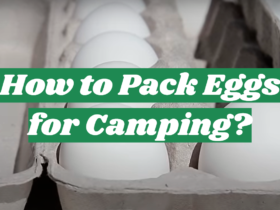




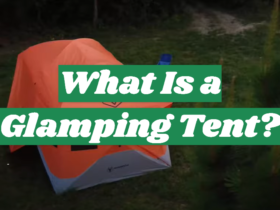
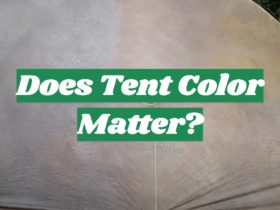
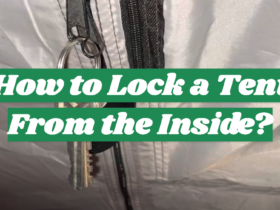
Leave a Review